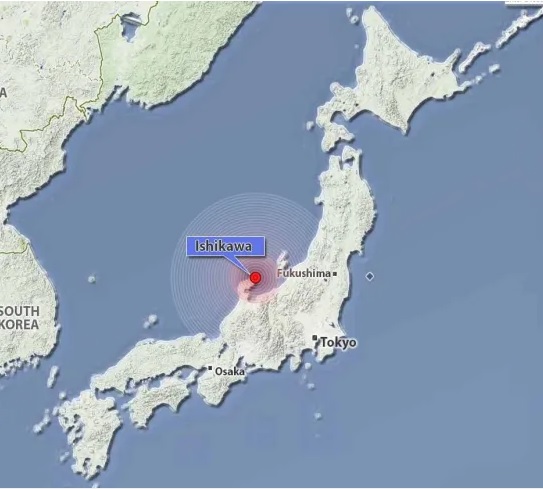~ Return to Kitty Hung’s profile page ~

Source: Japan New Year’s Day earthquake, live updates: Noto, Ishikawa Tsunami warning – AS USA
The recent devastating news on the earthquakes in the west coast of Japan on the New Year’s Day 2024 has made me feel very sad when seeing the impact of natural disasters on people’s lives and their properties.
As can be seen from the footages on TV and internet, the affected areas of Ishikawa and nearby prefectures are quite densely populated with well over one million people. At the time of writing this article (Tuesday 2rd January 2024), the death toll has already reached 48 with many more are still being trapped under the rubbles.
Although Japan is already a leader in the world in using technology to mitigate natural disasters, including earthquakes. For example, Japan has developed an Earthquake Early Warning System for the Shinkansen (a Japanese word meaning high-speed railway lines) which detects preliminary tremors from seismographs located along the tracks, the seafloor and inland, and then brings trains to an emergency stop by interrupting the electric supply.
My question is: what can we do more? This has triggered my thought about how to use artificial intelligence to conduct predictive analytics to:
(1) avoid putting settlements on high risked earthquake zones.
(2) send early warning to residents and business for evacuation to minimise loss of lives.
Can the tech industry use AI to help Japan tackle the earthquake devastation more effectively?
Machine Learning
One way to do this could be through the use of Machine Learning algorithms to analyse historical data on earthquakes and their impact on settlements. This data can be used to identify areas that are at high risk of earthquakes and to develop predictive models that can be used to forecast the likelihood of future earthquakes. These models can then be used to inform urban planning and zoning decisions, as well as to provide early warning to residents and businesses in high-risk areas.
AI Vision Algorithms
Another way to use AI to help tackle earthquake devastation is to use computer vision algorithms to analyse satellite imagery and to other data sources to identify areas that are at high risk of earthquakes. This data can be used to develop predictive models that can be used to forecast the likelihood of future earthquakes. Like the Machine Learning algorithms based on historical data, the satellite imagery data models can be used to inform urban planning and zoning decisions.
Social Media Analytics
In addition to the above, there are other ways that AI can be used to help tackle earthquake devastations. For example, AI can be used to analyse social media data to identify areas that are most affected by earthquakes and to provide real-time information to emergency responders and relief organisations.
AI Sensory
AI can also be used to analyse sensor data from buildings and other infrastructure to identify areas that are at high risk of damage during earthquakes and to develop strategies for mitigating this damage.
Neural Network for earthquake prediction
Researchers from Hiroshima University are in the process of developing a neural network model to predict earthquake impacts.
Further work
There are still ongoing efforts to develop the above systems as there is still room to improve before reaching maturity and effectiveness. While these technologies are still very much in development, they have the potential to be effective tools for mitigating the impact of earthquakes on settlements and for providing early warning to residents and businesses in high-risk areas. Due to the current limitations, it is important to continue the research and development for further improvement to tackle the earthquakes more effectively to save lives and properties.
Why do I disagree with Elon Musk?
Elon Musk has been campaigning to pause the development of AI and AGI. In 2023, Elon Musk co-signed a letter calling for a six-month pause on the development of AI particularly the more powerful version of the Generative Pretrained Transformer (GPT) 4, citing “profound risks” to human society. I think he is wrong to say this. Rather than pausing the development of AI, if the governments and industry can work together to ensure AI Safety, I think AI has the potential to help Japan as well as other countries with high risk of earthquakes tackle the earthquake devastation.